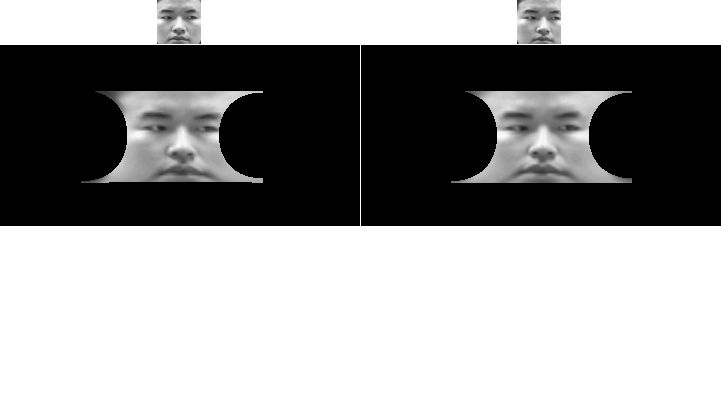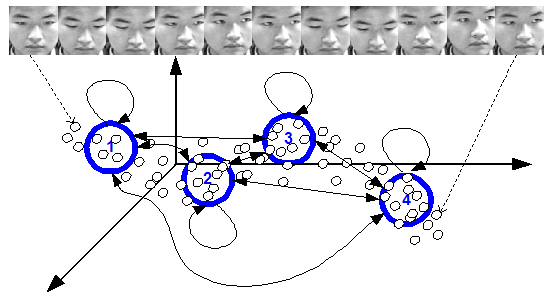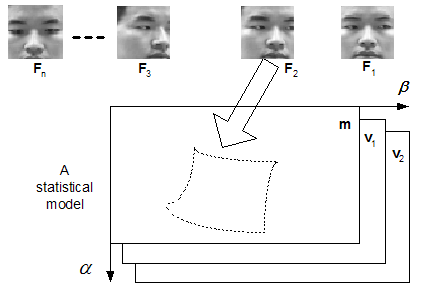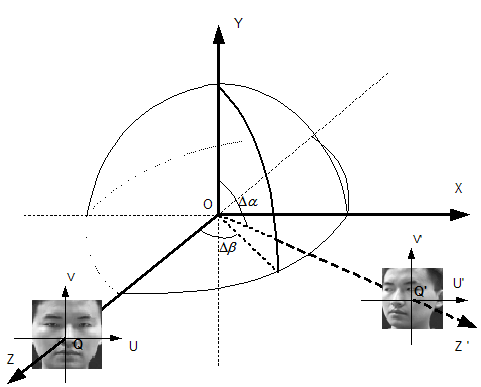|
About
AMP Lab
Projects
Downloads
Publications
People
Links
Project - Video Based Face Recognition

 Top of this page
Top of this page
To take advantage video
information and enhance face recognition performance compared to image based
recognition.
 Top of this page
Top of this page
Although face recognition has been an
active research topic for decades, the traditional recognition algorithms are
all based on static images. In this project, we would like to propose algorithms
for video based face recognition because it has superior advantages over the
image-based recognition. Such as, the temporal information of faces can be
utilized to facilitate the recognition task; and further, a better modeling
technique can be applied to the video sequence of human faces.
 Top of this page
Top of this page
First of all, we would like to take
advantage the temporal information in video sequences to enhance the face
recognition. We propose to use adaptive Hidden Markov Models (HMM) to perform
video-based face recognition. During the training process, the statistics of
training video sequences of each subject, and the temporal dynamics, are learned
by an HMM, as shown in Figure 1. During the recognition process, the temporal
characteristics of the test video sequence are analyzed over time by the HMM
corresponding to each subject. The likelihood scores provided by the HMMs
are compared, and the highest score provides the identity of the test video
sequence. Furthermore, with unsupervised learning, each HMM is adapted with the
test video sequence, which results in better modeling over time. Based on
extensive experiments with various databases, we show that the proposed
algorithm provides better performance than using majority voting of image-based
recognition results.

Figure 1. Temporal HMM for modeling
face sequences
Second, to provide a better modeling
for different variations in face videos, we propose an approach to generating a
statistical face model based on video mosaicing, as shown in Figure 2. Unlike
traditional video mosaicing, we use the geometry of a face to improve the
mosaicing result. Given a face sequence, each frame is unwrapped onto certain
portion of the surface of a sphere, as determined by spherical projection and
the minimization procedure using the Levenberg-Marquardt algorithm or the
Condensation method. For example,
Figure 3 shows how a side-view face image could be unwrapped onto the surface of
a sphere. A statistical model containing a mean image and a number of
eigenimages, instead of only one image template, is used to represent the face
mosaic. After generating the face mosaic model, we are using it for face
tracking and face recognition.

Figure 2. Overview for face mosaic
model

Figure 3. Spherical projection for
faces.
 Top of this page
Top of this page
-
Xiaoming
Liu and Tsuhan Chen, Geometry-assisted Statistical Modeling for Face
Mosaicing, In the Proceeding of the IEEE International Conference on Image
Processing 2003, pp. 883- 886, Barcelona, Spain, September 14-17, 2003.
-
Xiaoming
Liu, Tsuhan Chen, Video-Based Face Recognition Using Adaptive Hidden Markov
Models, In the Proceeding of the IEEE International Conference on Computer
Vision and Pattern Recognition 2003, pp.340-345, Vol.1, Madison, Wisconsin,
June 18-20, 2003.
 Top of this page
Top of this page
Any suggestions or comments are welcome. Please send them to
Xiaoming Liu.
 Top of this page
Top of this page
|




